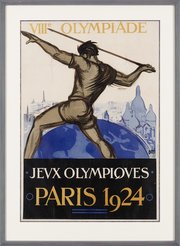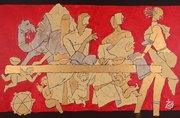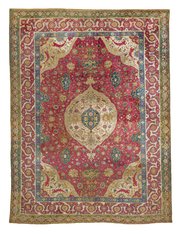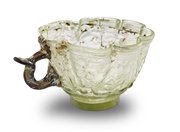
Folio from a Qur’an in New Style script
Museum of Islamic Art
- Title:
- Folio from a Qur’an in New Style script
- Production place:
- Iran
- Date:
- 1175 - 1200
- Period:
- Khwarezmid
- Title:
- Folio from a Qur’an in New Style script
- Production place:
- Iran
- Date:
- 1175 - 1200
- Period:
- Khwarezmid
- Material:
- Ink, Gold, Paper
- Technique:
- Calligraphy
- Dimensions:
- 27.9 × 17.8
Despite some damage, this folio still retains its iconic beauty. It once belonged to a now widely dispersed Qur’an manuscript in 30 volumes, for a total count of circa 2250 folios.
The calligraphy is a remarkable example of New Style script, an angular handwriting mainly adopted in the Eastern Islamic world. The calligrapher exaggerated certain features typical of this script, i.e. vertical elevation and sharp hedges, so that two lines of text become a monumental composition. However, the beauty of the calligraphy does not impair its legibility. The text is set against a delicate pattern of swirling tendrils in sepia ink; a variety of pigments, from burgundy to turquoise, were employed for this background decoration throughout the manuscript, resulting into a visually vibrant effect. Two marginal half-medallions originally complemented the illumination and have later been cut and pasted onto the top left corner of the page.
Comparisons with the 4th to 5th-century AH epigraphic pottery excavated in Nishapur and old Samarkand, stucco decoration from Khurasan and Afghanistan, and codicological analysis suggest an Eastern provenance for this manuscript. With its striking calligraphy and colourful decoration, the manuscript must have been a true masterpiece of its age, possibly destined to a princely patron.



